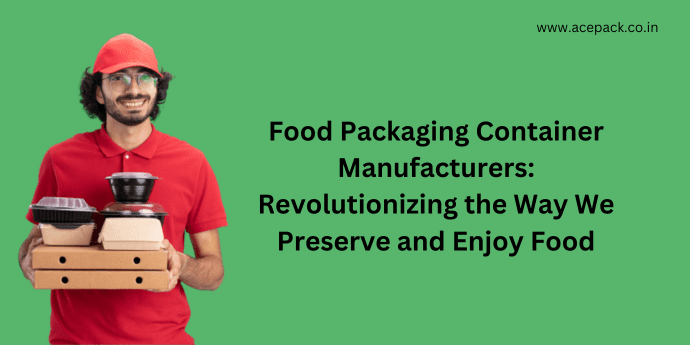
Food packaging container manufacturers play a crucial role in the food industry. They are responsible for producing a wide range of packaging solutions that keep food fresh, safe, and free from contamination. The quality of food packaging is essential for ensuring that the food stays fresh and maintains its integrity during transportation and storage.
Many different types of food packaging containers are available, including glass jars, plastic containers, paper bags, and metal cans. Each type of container is unique, depending on the type of food that must be stored and transported.
Table of Content
Food packaging is an essential aspect of the food industry, as it helps preserve and protect food items while also providing a convenient and attractive way to display them. One of the main advantages is the ability to design packaging that reflects a brand\'s image and message. This can involve using specific colors, fonts, and designs that are consistent with the company\'s branding. Additionally, businesses can customize the size and shape of packaging to fit their products perfectly, which can lead to more efficient use of space and reduced waste.
Another benefit of this is the opportunity to use sustainable and eco-friendly materials. Consumers are becoming more conscious of the environmental impact of packaging, and businesses that use sustainable materials can appeal to this growing market. Custom packaging solutions can incorporate materials such as biodegradable plastics, recycled paper, and compostable materials.
The innovative design is the collapsible food container, which is made of silicone and can be easily flattened for storage. These containers are perfect for those who want to save space in their cabinets or bags while also being able to pack a full meal.
Sustainability is also a key factor in food container design. Many companies are now producing containers made from eco-friendly materials like bamboo or recycled plastic. These containers are not only better for the environment, but they are also durable and long-lasting.
Eco-friendly food packaging is made from sustainable materials, such as plant-based plastics, recycled paper, and biodegradable materials. One of the most popular eco-friendly food packaging materials is plant-based plastics, which are made from renewable resources such as corn, sugarcane, and potatoes.
These materials are biodegradable and compostable, which means that they break down naturally in the environment without leaving harmful residues. Another eco-friendly option is recycled paper, which can be used to make packaging for a wide range of food products, including takeout containers, bags, and boxes.
Quality assurance in packaging refers to the process of ensuring that packaging materials and the finished products meet the required quality standards. To achieve quality assurance in packaging, manufacturers must implement a series of measures to ensure that the packaging materials are of high quality and that the packaging process is consistent. This includes conducting regular inspections of the packaging materials, ensuring that the packaging process is standardized, and monitoring the quality of the finished product.
Food packaging containers are essential for keeping food safe, preserving its quality, and providing convenience to consumers. There are many types of food packaging containers available on the market, each with its own unique features and benefits.
One of the most common types of food packaging containers is plastic. These containers are lightweight, durable, and come in a variety of sizes and shapes. They are also easy to seal, making them ideal for storing leftovers or pre-prepared meals.
Another type of food packaging container is glass. These containers are perfect for storing food as they are non-reactive, meaning they do not interact with the food in any way.
Paperboard containers are another popular type of food packaging container. These containers are ideal for dry and non-greasy foods, such as cereal or cookies. They are also an eco-friendly option as they are made from renewable resources and can be easily recycled.
The food packaging industry is an essential component of the food supply chain. It involves the design, production, and distribution of packaging materials and containers for food products. The main objective of food packaging is to protect and preserve the quality and safety of food products during transportation, storage, and consumption.
In recent years, the food packaging industry has faced increased scrutiny regarding the environmental impact of its products. Companies are now striving to create sustainable and eco-friendly packaging materials that are biodegradable, recyclable, and made from renewable resources. Consumers are also becoming more conscious of the environmental impact of their purchases and are demanding more sustainable options.
Other trends in the food packaging industry include the use of smart packaging, which can monitor the freshness and safety of food products, as well as the incorporation of technology such as QR codes for easy access to nutritional information and recipes.
In conclusion, food packaging container manufacturers play a vital role in the food industry. They are responsible for designing and producing containers that ensure the safety and preservation of food products during transportation and storage.